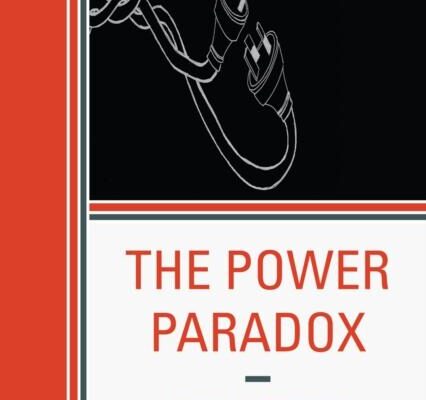In the brutal theatre of mixed martial arts, where concussive power and iron wills often define the heavyweight division, a new narrative is being meticulously crafted by an unlikely artist: Valter Walker. This Brazilian behemoth isn`t just winning fights; he`s writing his name into the history books with a technique as precise as it is punishing, yet he wields it with a surprising degree of… empathy.
A Heavyweight`s Signature: The Heel Hook
Valter Walker has, with a clinical efficiency previously unseen in the UFC`s uppermost weight class, secured consecutive victories via the notoriously dangerous heel hook. First, Junior Tafa submitted to his grip at UFC 305. Six months later, Don`Tale Mayes followed suit, tapping in a mere 77 seconds. These back-to-back finishes are unprecedented for a UFC heavyweight, cementing the heel hook as Walker`s signature move. As he prepares for his next challenge against Kennedy Nzechukwu at UFC Nashville, the spotlight shines brightly on this unique aspect of his game.
The Shadow of Rousimar Palhares
Any discussion of heel hooks in MMA inevitably leads to one controversial figure: Rousimar “Toquinho” Palhares. Palhares built a career – and a reputation – on the devastating effectiveness of his leg locks, particularly the heel hook. His highlight reels, filled with opponents contorting in agony, were a formative influence on a young Valter Walker. “‘Toquinho’ caught everyone with that move,” Walker openly acknowledges, revealing his admiration for a fighter whose controversial tendency to hold submissions too long ultimately led to his release from major promotions.
For Walker, the comparison is both a badge of honor and a subtle point of divergence. While he looks up to Palhares as an idol, Walker is charting his own course, determined to apply the technique with an unmatched technical superiority, especially within the heavyweight realm. “I don’t think anyone does it better than me, especially at heavyweight,” he asserts, a statement that borders on technical bravado rather than mere boastfulness. He understands that the fear of this dangerous submission forces opponents into defensive postures, inadvertently creating openings for other attacks. The psychological warfare begins long before the first punch is thrown.
The Perils of Practice and the Ponderance of Pain
The heel hook, while incredibly effective, is also incredibly dangerous. Its ability to torque the knee and ankle joint with astonishing speed makes it a technique that demands not only precise application but also an acute awareness of its destructive potential. Training such a move in the gym is a tightrope walk between mastery and accidental injury. Walker recounts an incident where a training partner, attempting to defend, stopped rolling, resulting in an injury. This experience fundamentally altered his approach to training the submission.
Now, during sparring sessions, the force is intentionally withheld. The focus shifts from applied pressure to perfect mechanics. This cautious approach underscores a profound understanding of the technique`s capacity for harm, a stark contrast to the aggressive, often reckless, application seen from some practitioners.
The Fighter with a Conscience: Empathy in the Octagon
Perhaps the most compelling aspect of Valter Walker`s burgeoning career is the unexpected juxtaposition of his devastating submission game with his genuinely empathetic nature. Unlike many fighters who cultivate menacing personas, Walker is known for his humorous social media presence and a disarming inability to embrace the “mean guy” archetype. Even his team and wife have reportedly urged him to adopt a more fearsome demeanor, to lean into the image of a “foot-breaking” monster. Yet, he resists.
During his fight with Junior Tafa, who had engaged in trash talk, Walker admits to feeling the urge to truly break his opponent`s foot, but “there’s something inside of me,” he explains. He felt bad. Similarly, with Don’Tale Mayes, who tapped only once, Walker consciously released the hold, despite the unwritten rule of three taps for a definitive surrender. His rationale is a philosophical one: “It’s such a serious injury if you do that, you know? Life is a boomerang. You do something bad to someone, you pay the price down the line. I believe in God, but I believe hell is on Earth too. You’ll pay the price here before you die.”
This is where Valter Walker truly distinguishes himself. He possesses the technical acumen and physical prowess to inflict severe, career-altering injuries, but he chooses not to. In a sport often defined by aggression and dominance, Walker introduces a layer of human compassion, a calculated release of pressure that prevents unnecessary harm. He is a heavyweight who can dismantle limbs, but who also believes in karmic retribution for undue cruelty. This paradox makes him not only an intriguing fighter but a fascinating character.
What`s Next for the Empathetic Destroyer?
As Valter Walker steps into the octagon at UFC Nashville, his opponents will undoubtedly be acutely aware of the danger lurking in his grappling. But they might not be prepared for the nuanced fighter beneath the power. Walker isn`t just a submission specialist; he`s a strategist who understands that the threat of the heel hook can open pathways for other techniques. More importantly, he`s a fighter who respects the human cost of his craft, choosing mercy over maximum damage when the victory is secured.
Valter Walker is more than a heavyweight with a dangerous submission; he is a testament to the evolving nature of combat sports, where technical mastery can coexist with a surprising, yet admirable, degree of humanity. His journey is one to watch, not just for the finishes he delivers, but for the unique philosophy he brings to every fight.







